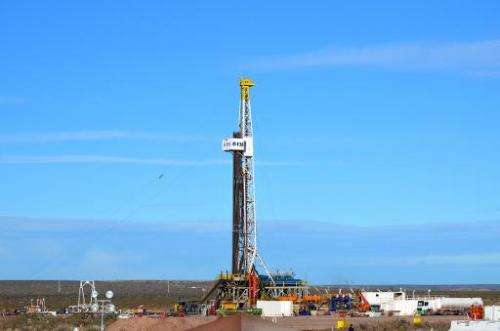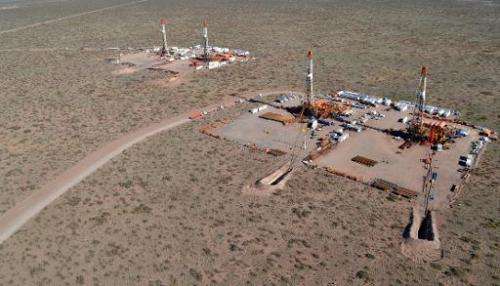Shale oil boom fuel Argentina's dreams

Argentina is investing heavily in shale oil, hoping to ride it to energy self-sufficiency and end dependence on imports that cost billions of dollars each year.
Argentina is a pioneer in shale oil exploration and now the third biggest producer of it after China and the United States, according to US figures.
Its state oil concern YPF two years ago started production at Loma la Lata, a windswept Patagonian plain under which lies clay-rich soil that contains shale oil. It is part of a larger shale-rich expanse called Vaca Muerta, or dead cow.
To produce it for market, unconventional oil requires the same hydraulic fracturing ("fracking") and horizontal drilling techniques as shale gas.
And now, YPF is using its shale oil know-how to speed into operation about 200 unconventional wells in the Loma la Lata, Vaca Muerta area every year. It plans to spend $15 billion in a decade, reaching 1,500-2,000 of these wells.
"With just two of these areas of 2,000 wells each, Argentina can fully meet its domestic oil demand, and even have some left over to export," said Pablo Iuliano, YPF's unconventional oil manager.
An Argentine-Chinese group called Bridas announced Wednesday it will invest $500 million to explore for shale oil in Vaca Muerta.
All this is music to the ears of the Argentine government. The country spent more than $11 billion on oil imports in 2011, and the total is expected to soar to $13 billion this year.

Energy reserves that lie below Vaca Muerta—in the provinces of Neuquen and Mendoza—have become the country's great hope for turning around its energy sector, and achieving a trade surplus.
But it's not just pipe dreams. It's already in the pipelines.
"Developing our unconventional resources is our top challenge... and the key to our oil and gas independence," YPF, brought back under state control in 2012 when it was expropriated from Spain's energy giant Repsol, states on its website.
The reserve area YPF is working in at Vaca Muerta is 77 percent oil and the rest natural gas, according to the company.
While the volume may not be massive, Argentina is a mid-sized economy with just 42 million people. In July, YPF was producing about 8,000 barrels of unconventional oil per day.
YPF expects to increase production to 17,000 bpd later this year, 38,000 bpd in 2014 and 60,000 the following year.
By 2017, authorities hope Argentina will be producing 100,000 bpd, as well as 13 million cubic meters a day in natural gas.
Fracking has unlocked an energy boom in the United States.
But it has been banned in other countries over environmental fears. French President Francois Hollande, for example, has ruled out shale gas exploration during his term in office.
Fracking involves injecting huge amounts of pressurized water mixed with chemicals into a well to crack open shale, the sedimentary rock containing hydrocarbons, to release natural gas.
Environmentalists have warned that chemical-laced waste could contaminate fresh water resources, while many worry that fracking causes minor earthquakes.
Argentine Nobel Peace laureate Adolfo Perez Esquivel has been among the most vocal critics of potential environmental fallout here, charging that YPF has become a major polluter.
But the company insists that because Vaca Muerta is 2,500 meters (8,200 feet) underground, the work is happening far below fresh water supplies and thus avoid potential environmental damage.
© 2013 AFP



















